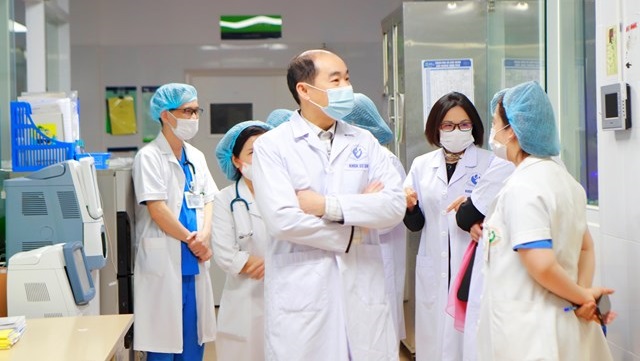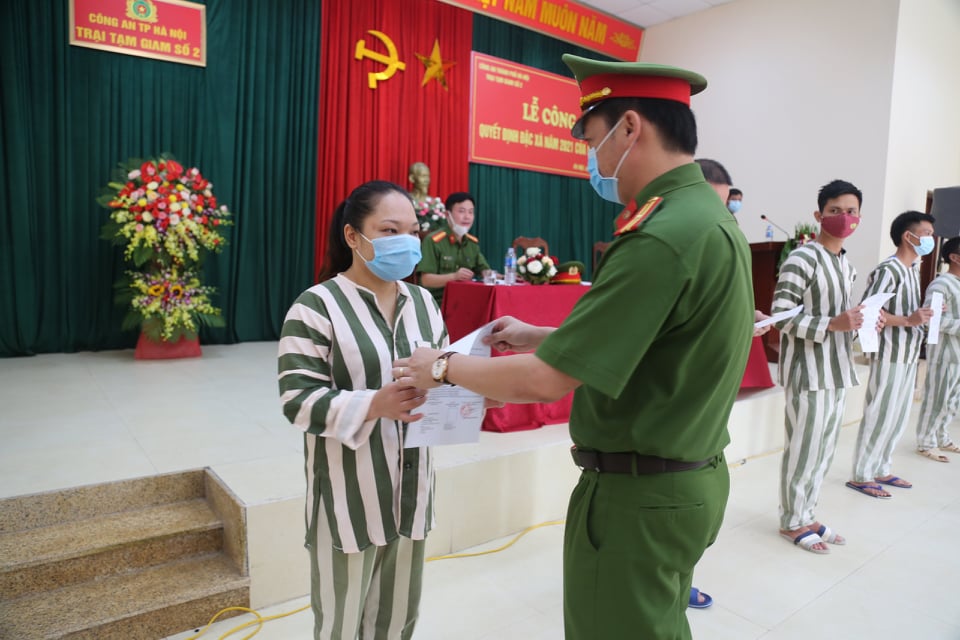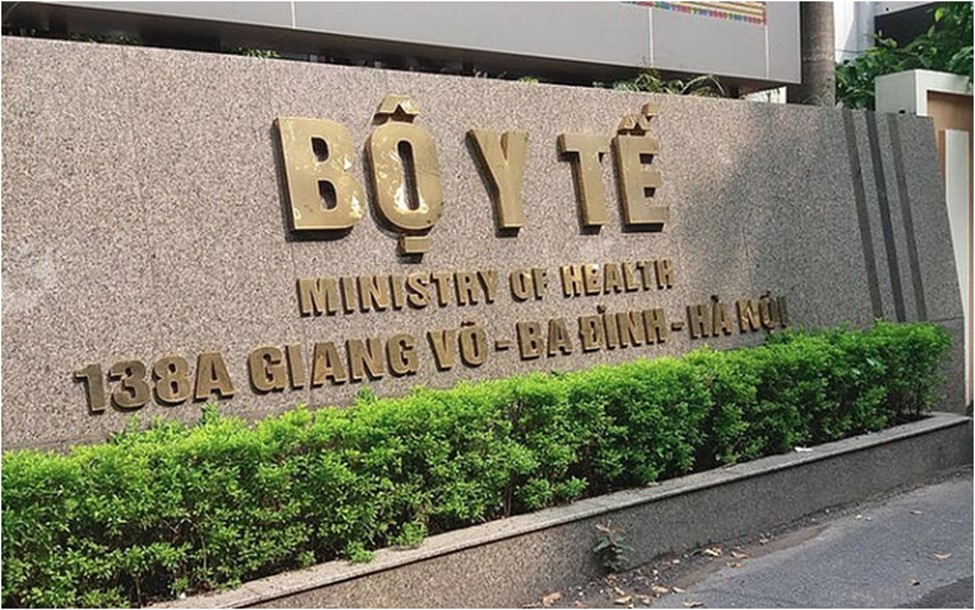Basic quality standards for hospitals in Vietnam from January 1, 2025
The following article will provide details on the basic quality standards for hospitals in Vietnam from January 1, 2025.

Basic quality standards for hospitals in Vietnam from January 1, 2025 (Image from internet)
On November 16, 2024, the Minister of Health of Vietnam issued Circular 35/2024/TT-BYT on basic quality standards for hospitals.
Basic quality standards for hospitals in Vietnam from January 1, 2025
The Appendix issued with Circular 35/2024/TT-BYT stipulates the basic quality standards for hospitals in Vietnam from January 1, 2025 as follows:
| No. | STANDARD | ASSESSMENT RESULTS | |
|---|---|---|---|
| Yes | No | ||
| I. | Standards on Facilities | ||
| 1. | The hospital must have a fixed location.* | ||
| 2. | The hospital must have an access path for emergency vehicles to enter and exit the emergency area.* | ||
| 3. | Departments, rooms, and specialized units: | ||
| 3.1. | Arranged appropriately according to the functions of each unit.* | ||
| 3.2. | Ensure connectivity of transportation infrastructure among specialized units, facilitating medical examination and treatment, and ensuring safety for patients, their relatives, and medical staff.* | ||
| 4. | There must be signs, diagrams, and direction boards to the departments, rooms, specialized units, and administrative sections.* | ||
| 5. | Means of emergency transportation must be available inside and outside the hospital.* | ||
| 6. | Environmental Standards: | ||
| 6.1. | Measures for handling domestic waste. | ||
| 6.2. | Measures for handling medical waste. | ||
| 7. | Standards on Radiation Safety: | ||
| 7.1. | Possess a license for conducting radiation-related work. | ||
| 7.2. | Written documents assigning responsibility for radiation safety tasks. | ||
| 7.3. | Staff conducting radiation tasks must hold a radiation staff certificate. | ||
| 7.4. | Dosimeters must be equipped for radiation staff. | ||
| 8. | There must be electricity and water for the operation of medical examination and treatment facilities. | ||
| II. | Standards on Scale and Organizational Structure | ||
| 1. | The hospital must have an organizational structure that includes departments: outpatient, clinical, paraclinical, pharmacy, and auxiliary parts. | ||
| 2. | The outpatient department must have a reception area, emergency room, retention room, consultation room, and a room for performing techniques and procedures (if such techniques and procedures are carried out). | ||
| 3. | Clinical Department: - For a general hospital: must have at least two of the four departments: internal medicine, surgery, obstetrics, pediatrics. - For specialized hospitals, traditional medicine hospitals, dental-maxillo-facial hospitals: must have at least one clinical department compatible with the scope of specialized activities. |
||
| 4. | Paraclinical Department: must have at least one laboratory and one imaging diagnostic room. Specifically for ophthalmology hospitals, if there is no imaging diagnostic department, there must be a professional support contract with a licensed medical examination and treatment facility that has an imaging diagnostic department. |
||
| 5. | The pharmacy department includes units: pharmaceutical operations, storage and dispensing, pharmaceutical statistics, drug information, and clinical pharmacy. | ||
| 6. | Nutrition Department; clinical nutrition unit; person in charge of nutrition; person working on nutrition. | ||
| 7. | Infection control department; infection control unit; person working on infection control. | ||
| 8. | Other specialized units in the hospital appropriate for the scope of professional activities. | ||
| 9. | Rooms and units to perform functions of general planning, personnel organization, quality management, nursing, financial accounting, information technology, medical equipment, and other necessary functions. | ||
| III. | Standards on Personnel | ||
| 1. | Practitioners are assigned tasks appropriate to their practicing scope as approved by the competent authority. | ||
| 2. | Practitioners are continuously updated with medical knowledge. | ||
| IV. | Standards on Medical Equipment | ||
| 1. | Medical equipment for performing techniques within the scope of professional activities must be approved by the competent authority and have a management record for those devices. | ||
| 2. | Regulations on management, use, inspection, maintenance, repair, replacement of materials and components, storage of medical equipment at medical examination and treatment facilities. | ||
| 3. | Procedures for use, operation, repair, maintenance ensuring the quality of medical equipment. | ||
| 4. | Medical equipment under the list requiring inspection and calibration must be inspected and calibrated as per regulations. | ||
| 5. | There must be units and personnel responsible for managing the use, inspection, maintenance, repair, inspection, and calibration of medical equipment. | ||
| V. | Standards on Expertise | ||
| 1. | Inpatient treatment and organizing professional duty 24/7 of all days. | ||
| 2. | Outpatient examination and treatment procedures. | ||
| 3. | Dissemination, application, and development of professional processes for medical examination and treatment: | ||
| 3.1. | Promotion of medical examination and treatment technical procedures issued by the Ministry of Health or hospitals. | ||
| 3.2. | Promotion of diagnostic and treatment guidelines issued by the Ministry of Health or hospitals. | ||
| 3.3. | Application of medical examination and treatment technical procedures issued by the Ministry of Health or hospitals. | ||
| 3.4. | Application of diagnostic and treatment guidelines issued by the Ministry of Health or hospitals. | ||
| 3.5. | Training or promotion or directives on compliance with prescription regulations. | ||
| 4. | Quality management: | ||
| 4.1. | Establishment of a quality management system. | ||
| 4.2. | Operational regulations of the hospital quality management council. | ||
| 4.3. | Plan/proposal for overall quality improvement of the entire hospital for the current year or for the next one to three years. | ||
| 4.4. | Hospital quality indicators and measurement results. | ||
| 4.5. | Quality management of laboratory testing includes: quality management plan, developing guidelines, training related staff, and assessing the implementation of the laboratory testing quality management plan. | ||
| 4.6. | Reporting of medical incidents. | ||
| 5. | Infection control includes: organization, task assignment; developing procedures. | ||
Note: For standards marked with *, documentation only needs to be re-provided if there is a change between two evaluations.
Notice: These basic quality standards only apply to medical examination and treatment facilities licensed to operate as hospitals.
The basic quality evaluation for hospitals in Vietnam is conducted as follows:
- Conduct a basic quality standard evaluation once a year;
- Evaluation is carried out in the first quarter of the following year;
- Classification of assessment.
Meets basic quality standards: all standards are "Yes" in the "Assessment Results" column;
Does not meet basic quality standards: any standard is marked "No" in the "Assessment Results" column.
Circular 35/2024/TT-BYT comes into effect on January 1, 2025.
- Key word:
- Basic quality
- hospital
- Vietnam
- Number of deputy directors of departments in Vietnam in accordance with Decree 45/2025/ND-CP
- Cases ineligible for pardon in Vietnam in 2025
- Decree 50/2025 amending Decree 151/2017 on the management of public assets in Vietnam
- Circular 07/2025 amending Circular 02/2022 on the Law on Environmental Protection in Vietnam
- Adjustment to the organizational structure of the Ministry of Health of Vietnam: Certain agencies are no longer listed in the organizational structure
- Vietnam aims to welcome 22-23 million international tourists in Vietnam in 2025
-

- Number of deputy directors of departments in Vietnam ...
- 15:04, 05/03/2025
-

- Cases ineligible for pardon in Vietnam in 2025
- 14:43, 05/03/2025
-

- Decree 50/2025 amending Decree 151/2017 on the ...
- 12:00, 05/03/2025
-

- Circular 07/2025 amending Circular 02/2022 on ...
- 11:30, 05/03/2025
-

- Adjustment to the organizational structure of ...
- 10:34, 05/03/2025
-

- Notable new policies of Vietnam effective as of ...
- 16:26, 11/04/2025
-
.Medium.png)
- Notable documents of Vietnam in the previous week ...
- 16:21, 11/04/2025
-
.Medium.png)
- Notable documents of Vietnam in the previous week ...
- 16:11, 02/04/2025
-
.Medium.png)
- Notable new policies of Vietnam to be effective ...
- 16:04, 02/04/2025
-
.Medium.png)
- Notable new policies of Vietnam effective from ...
- 14:51, 21/03/2025

 Article table of contents
Article table of contents
